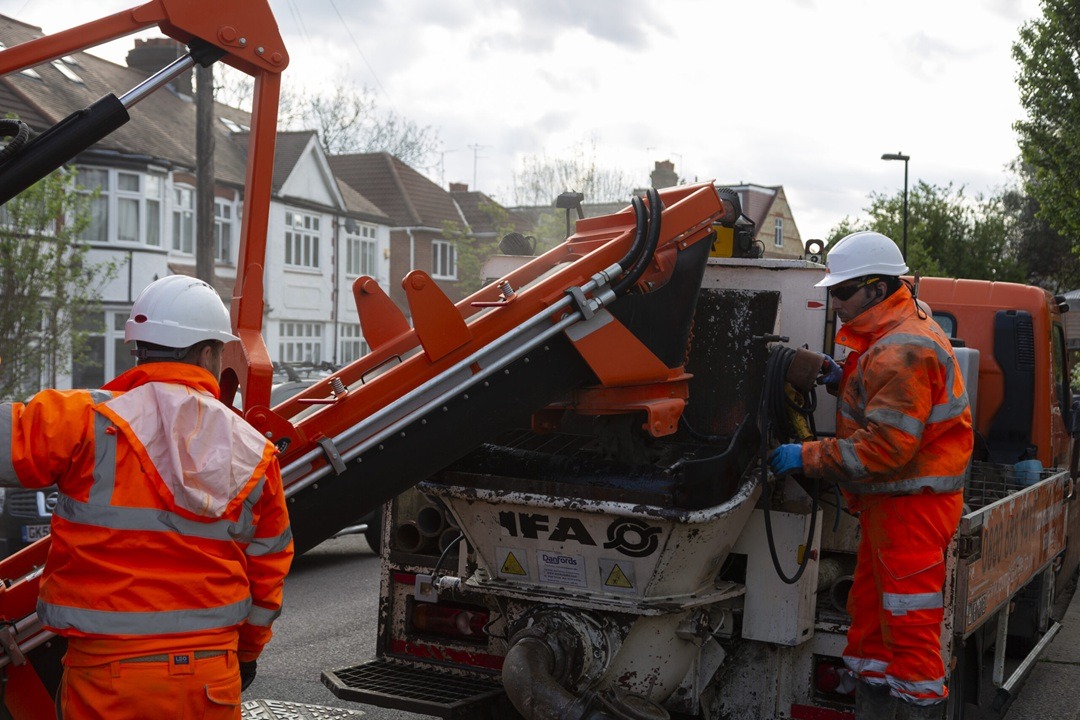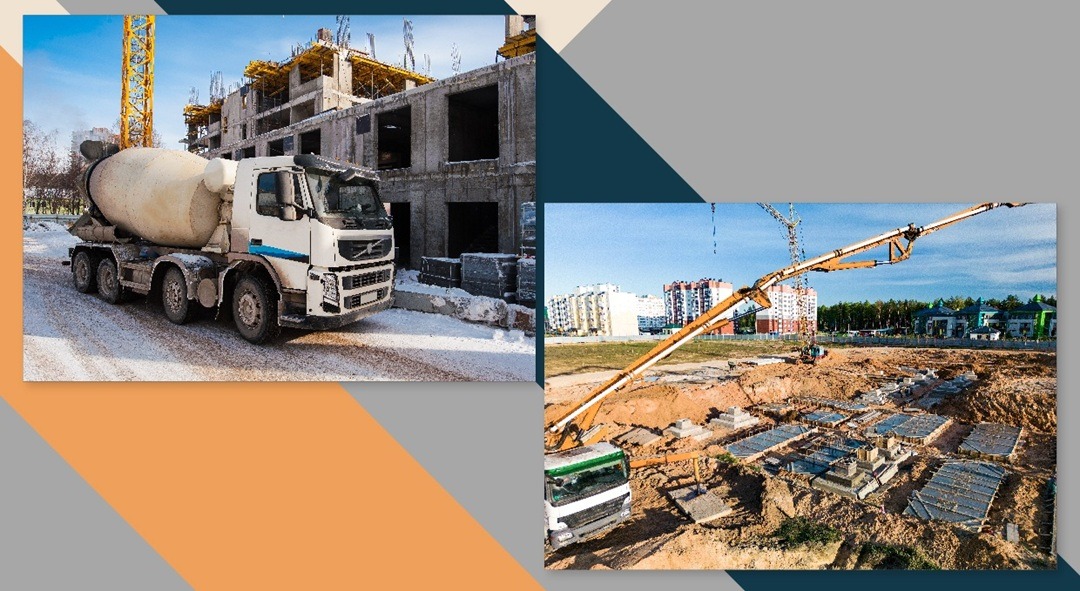Ever wondered how construction projects stay on budget and on time? The secret often lies in accurate, concrete mixture estimation. Getting the calculations right is crucial, but misjudging your concrete needs can lead to wasted materials, costly delays, and unexpected expenses. But when done correctly, contractors can save up to 15% on material costs and reduce project delays by 30%. It’s not just about knowing the right formula. Basically, it is related to using the best techniques and tools to ensure your project runs smoothly, without breaking the bank.
Basic Volume Calculation: The Foundation of Concrete Estimation
The first step in calculating concrete is understanding how to figure out the volume of concrete required for a given space. The most common formula used for estimating concrete in simple, rectangular projects is:
Volume = Length × Width × Thickness
While this formula is simple, understanding its application correctly is the key to accuracy. Below are essential considerations to help you make precise calculations.
Key Points to Keep in Mind:
- Unit Consistency:
All measurements must be in the same unit. For example, if the length and width are measured in feet, the thickness should also be measured in feet. If you’re working in inches, convert the inches to feet by dividing by 12 before proceeding.
- Measurement Accuracy:
Construction projects often involve large surface areas, and slight measurement errors can lead to significant discrepancies. Double-check measurements for length, width, and thickness to ensure the calculations reflect the actual area that requires concrete.
- Understanding Depth and Thickness:
Concrete pours are often measured in terms of thickness. For a driveway, for instance, you may need 4 to 6 inches of thickness. For foundations or slabs, you may need to adjust for load-bearing capabilities or local regulations.
Example Calculation:
Let’s say you need to calculate the amount of concrete required for a 125-foot by 4-foot slab with a thickness of 3.5 inches.
- Convert the thickness from inches to feet:
3.5 inches ÷ 12 = 0.2917 feet
- Apply the volume formula:
Volume = 125 × 4 × 0.2917 = 145 cubic feet
To convert cubic feet to cubic yards (which is how concrete is typically ordered), divide by 27 (since there are 27 cubic feet in one cubic yard).
145 ÷ 27 = 5.37 cubic yards
This simple example shows how volume is calculated for a rectangular slab, but what if the project isn’t a rectangle?
Advanced Calculation Techniques for More Precision
While basic calculations are effective for many construction tasks, more complex or large-scale projects can benefit from advanced methods. These techniques can greatly improve the accuracy of your concrete estimations, especially in cases where irregular shapes or varying dimensions are involved.
1. Terrestrial Laser Scanning (TLS)
Terrestrial Laser Scanning (TLS) is one of the latest innovations in construction measurement. TLS uses laser beams to scan a surface and create a 3D model. It’s particularly beneficial in projects that involve curves, irregular surfaces, or intricate designs, where traditional measuring methods might fall short.
Why TLS is Important:
- Accuracy: According to research, Gaate TLS can provide concrete volume estimates with an error margin as low as 0.19%. This makes it an ideal tool for highly complex structures where precision is paramount.
- Time-saving: By using TLS, contractors can quickly scan large surfaces and generate precise data. This method eliminates the need for manual measurements that are prone to human error.
- Application: TLS is especially useful in tunneling, industrial construction, or any project with irregular, 3D surfaces. It can also help identify areas that may need more material or have more wear, ensuring that the concrete mix is optimised for strength.
2. Coefficient of Thermal Expansion (CTE)
When concrete is exposed to temperature changes, it expands and contracts. The Coefficient of Thermal Expansion (CTE) is a measure of how much concrete will change in volume with a change in temperature. In areas where there are extreme temperature variations, it’s crucial to account for thermal expansion when estimating concrete quantities.
Why It Matters:
- Prevents Cracks and Damage: When concrete expands due to heat and contracts when it cools, it can cause cracks or stress points in the concrete, especially in thinner slabs. By accounting for CTE, you can ensure that the concrete remains strong and intact under fluctuating temperatures.
- Long-Term Durability: Understanding CTE helps improve the longevity of your concrete structure. Projects in high-temperature regions like deserts or areas with harsh winters may require higher or more flexible concrete mixes.
Considerations: When applying CTE to your concrete estimation, consider both the local climate and the concrete mix. More durable mixes or adding expansion joints may be necessary for extreme conditions.
Practical Guidelines for Estimating Concrete
Concrete estimation doesn’t always have to be complex, especially for straightforward projects. Here are some practical guidelines to help you refine your concrete calculations.
1. Residential vs. Commercial Thickness
The thickness of the concrete pour is crucial in estimating the right amount of material for your project. Here’s a breakdown of common thicknesses used in residential and commercial applications.
Residential Slabs:
- Sidewalks and Patios: Typically, 4 inches of concrete thickness is sufficient for light use.
- Driveways: Requires a thicker slab of 6 inches to withstand heavier loads like vehicles.
- Foundations: For residential buildings, the foundation slab generally requires 8 inches to provide sufficient strength.
Commercial Slabs:
- Industrial Floors: Commercial concrete slabs in warehouses, factories, or distribution centers are generally poured at 8 to 12 inches thick due to the load-bearing requirements of heavy machinery and high foot traffic.
- Parking Lots and Roads: These slabs usually require 6 to 8 inches of concrete for durability.
2. The “Magic Number” for Quick Estimates
For quick calculations of standard 4-inch-thick slabs, there’s a shortcut that can simplify volume estimation. It’s called the “Magic Number” formula. The “magic number” for a 4-inch-thick slab is 81.
- Formula:
Cubic yards = 81 Square footage/ 81
This formula works well for estimating the volume of concrete required for most standard slabs.
Example:
For a 500-square-foot slab:
500/81 ≈ 6.17 cubic yards
This method doesn’t replace exact calculations, but it is useful for rough estimates when you need a quick ballpark figure.
3. Accounting for Wastage
In real-world projects, a small portion of concrete will be wasted due to spillage, over-pouring, or uneven surfaces. As a rule of thumb, always add a little extra concrete to your estimate to account for wastage, usually 5-10% more than the calculated volume.
Why You Need Extra:
- Spills and Errors: Contractors can accidentally spill concrete during pouring, which might not always be recoverable. Adding extra material ensures that the pour can continue without delays.
- Uneven or Compacted Soil: If the ground surface is uneven, it may require additional material to fill gaps. Additionally, some types of soil, like sandy soils, may require more concrete as the mix will sink and compact.
- Cold Weather: Concrete poured in cold conditions may not set evenly or fully, leading to wastage.
4. Ready-Mix Concrete and Unit Conversion
When ordering ready-mix concrete, suppliers usually measure the concrete in cubic yards. To convert cubic feet to cubic yards, divide by 27 (since there are 27 cubic feet in one cubic yard).
Conversion Example:
For a slab measuring 10 x 10 x 4 inches:
- Convert inches to feet: 4 inches ÷ 12 = 0.33 feet
- Use the formula:
10×10×0.33/ 27 =1.24cubic yards
This conversion method helps ensure you are ordering the correct amount of concrete from the supplier and that there are no discrepancies in delivery.
Common Pitfalls and Solutions in Concrete Estimation
Even experienced contractors can run into challenges when estimating concrete. Here’s a breakdown of common issues and how to avoid them:
1. Unit Consistency
One of the most frequent errors in concrete calculations is using different units for length, width, and thickness. For example, using feet for the length and width but inches for thickness can result in incorrect volume estimations.
Solution:
Ensure that all measurements are converted into the same unit before performing calculations. For consistency, use feet for all dimensions. Convert inches to feet (divide by 12) and yards to feet (multiply by 3).
2. Irregular Shapes
Concrete is rarely poured into perfect rectangles or squares. For irregular shapes like circles, trapezoids, or curves, you’ll need specialised formulas.
For Circles:
- Use the formula:
Volume = π × radius² × height
For a cylindrical column, this formula can quickly give you the volume.
3. Over-Ordering Concrete
Ordering too much concrete can result in wasted materials and extra costs. Make sure to calculate your volume as accurately as possible and confirm with your supplier if you’re unsure about any details.
Solution:
Rely on concrete calculators or software tools to refine your calculations and avoid human errors. Always check with your supplier for their return policy on excess concrete, as some may allow you to return a small amount, but penalties could apply.
Research-Backed Tools for Accurate Concrete Estimation
Modern tools and technologies can streamline concrete estimation, providing more accurate results in less time.
1. Concrete Calculators
Online concrete calculators can automatically calculate the cubic yards needed based on your measurements, saving time and reducing errors. Many of these tools allow you to adjust for slab thickness, wastage, and unit conversions. Simply enter your dimensions and get an instant estimate.
2. Terrestrial Laser Scanning (TLS)
Terrestrial Laser Scanning (TLS) can capture complex details and generate a 3D model of a structure to calculate precise concrete volumes. For projects with unusual shapes or large-scale requirements, TLS can save time and improve accuracy.
Accurate Concrete Estimation Matters
Accurate concrete estimation is essential for any successful construction project. Not only does it help ensure that you don’t overpay for unused material, but it also prevents delays caused by a lack of material on-site. By utilising accurate calculation methods, such as volume formulas, concrete calculators, and advanced tools like TLS, you can confidently estimate the right amount of concrete for your project.
The benefits are clear: better planning, fewer mistakes, and more efficient use of resources. Don’t let concrete miscalculations hold your project back. Choose Pro-Mix Concrete for reliable, precise, and cost-effective solutions that keep your construction on schedule and within budget.
Ready for the right mix every time? Visit Pro-Mix Concrete now and build with confidence!
Frequently Asked Questions
Yes! Tools like Total Concrete’s calculator automate unit conversions and reduce errors. Input dimensions, and it outputs the cubic yards or bags required.
Mixing units (e.g., inches and feet), ignoring waste buffers, and miscalculating irregular shapes. Always double-check conversions and use a consistent formula.
Residential slabs (e.g., patios) often use a 4-inch thickness, while driveways or heavy-load areas require 6+ inches. Adjust depth based on structural needs.
Unique site factors like soil quality, topography, and accessibility can influence the amount of concrete required and should always be considered during estimation.
Using incorrect proportions of cement, sand, gravel, or water can lead to weak, non-durable concrete and structural failures.
- Dennis Broderick
- Dennis Broderick is the founder and owner of Pro-Mix Concrete Company, a trusted name in ready-mix concrete solutions across the UK. With over 20 years of hands-on experience in the construction and concrete industry, Dennis brings unmatched expertise, practical insights, and a commitment to quality on every project - from residential driveways to large-scale commercial developments.
BlogNovember 15, 2025What is the Mix Proportion of Concrete?
BlogOctober 30, 2025Same-Day and Next-Day Delivery Options from London Concrete Suppliers
BlogOctober 28, 2025Line Pump Hire vs. Boom Pump Hire Prices in London
BlogOctober 25, 2025How Quickly Concrete Must Be Used Once Delivered In London Traffic









